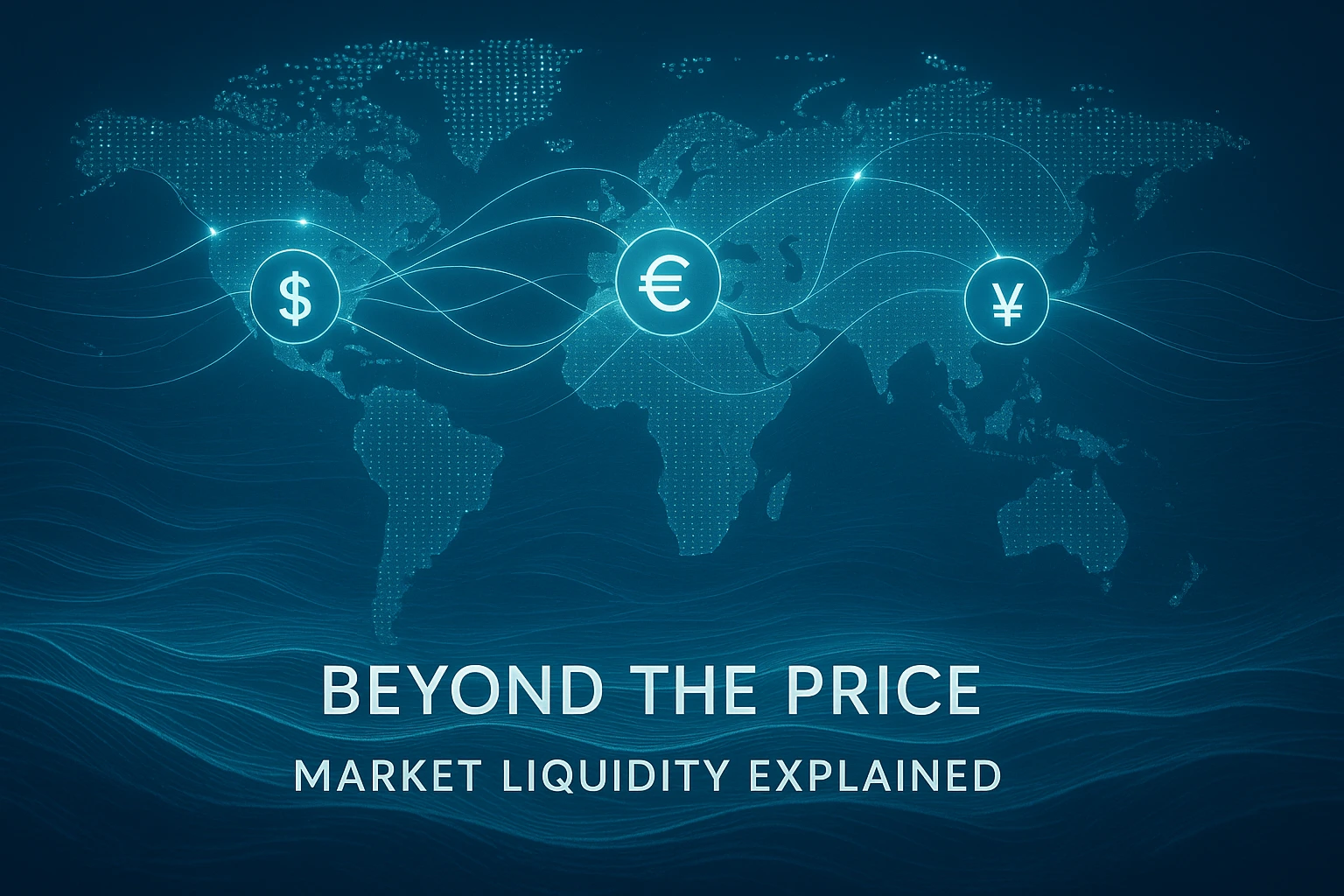When using a price converter, the user is presented with a single number: the current exchange rate. This number, however, represents an idealized price in a perfectly efficient market. In the real world, another crucial factor determines the quality and cost of a currency conversion: market liquidity.
Liquidity refers to the ease with which an asset can be bought or sold without causing a significant change in its price. It is a measure of how “deep” a market is—how many buyers and sellers are actively participating at any given time. For individuals and businesses converting currency, the liquidity of the specific currency pair has a direct impact on the final cost of their transaction.
The major pairs: A deep ocean of liquidity
The most liquid currency markets are the “major pairs,” which all involve the U.S. Dollar paired with another major global currency, such as the Euro (EUR/USD), the Japanese Yen (USD/JPY), the British Pound (GBP/USD), and the Swiss Franc (USD/CHF). These pairs account for the vast majority of all forex trading volume.
Because there are millions of participants, from central banks to individual traders, all buying and selling these currencies at every moment, the market is incredibly deep. This high liquidity results in a very tight “bid-ask spread” (the difference between the best buying price and the best selling price). For someone converting currency, this means the rate they receive will be very close to the mid-market rate, and the transaction cost will be minimal.
The minor and exotic pairs: Navigating thinner markets
Beyond the majors are the “minor pairs” (or “crosses”), which involve two major currencies that do not include the U.S. Dollar (e.g., EUR/GBP or AUD/JPY), and the “exotic pairs,” which involve a major currency paired with one from a smaller or emerging economy (e.g., USD/ZAR or EUR/TRY).
These markets are significantly less liquid than the major pairs. There are fewer active participants, which results in a much wider bid-ask spread. This wider spread is a direct cost to the person converting the currency. The rate they get for buying the exotic currency will be significantly higher than the mid-market rate, and the rate they get for selling it will be significantly lower. This is because the bank or broker is taking on more risk to facilitate the trade in a thinner market, and they pass that cost on to the customer.
The impact of time of day and market volatility
Liquidity is not constant; it fluctuates throughout the day. The forex market is most liquid when multiple major financial centers are open at the same time, particularly during the “London/New York overlap” in the middle of the global trading day. During the quieter Asian session or on weekends, liquidity drops significantly, spreads widen, and the cost of converting currency increases.
Liquidity also tends to dry up during periods of extreme market volatility, such as after a major political event or economic announcement. In these moments, everyone might rush to one side of the market, and the number of willing buyers or sellers can temporarily disappear, leading to wide spreads and “slippage” where trades are executed at a price far from the expected level. The psychology of how markets behave in these low-liquidity environments is a key area of study for professional traders, touching on principles of Trading Psychology and Risk Management.
How your broker manages liquidity
For an individual or business, the quality of their bank or brokerage has a significant impact on the execution they receive, especially in less liquid markets. A high-quality broker establishes relationships with multiple “liquidity providers” (large banks and financial institutions) to create a deep and competitive pool of liquidity for its clients. When a client places a trade, the broker’s system can instantly source the best available price from this network of providers.
This “smart order routing” ensures that even in thinner markets, the client receives the tightest possible spread and the most efficient execution. A platform like the YWO trading platform is built on this type of professional-grade infrastructure, designed to provide its clients with superior execution across a wide range of currency pairs. This access to deep liquidity is a key differentiator between a retail-focused currency exchange service and a professional-grade brokerage.

Jay is a data analyst and research writer. He works in the field of finance, decentralised finance, stock market, and business. He used to work as a finance consultant in Silicon Vally, after which he decided to reduce his stress levels and go on a less-thriving way. His favourite graphic novel is Hellblazer.
